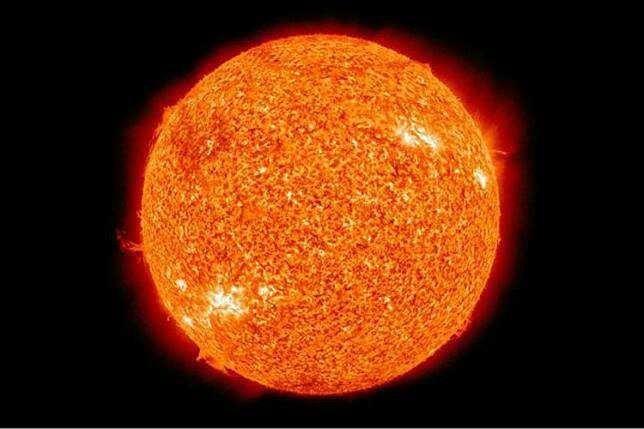
Have you ever imagined if the sun dims or cools? It may be hard to imagine the sun being "cold".
However, this is the prediction of world scientists. By 2050, the sun is expected to be very cold.
This phenomenon is given the term "grand minimum", which is a very low point in a stable 11-year solar cycle.
In a report on NASA's official website in 2017, every 11 years or so, sunspots will fade and bring a quieter period. The sun's own spots are known to be the black dot in the sun (visible from the coated telescope) which has magnetic properties.
During this cycle, the solar activity will increase and then enter in the "rest" phase.
At its peak point, nuclear fusion at the strength of the sun's core forces the magnetic waves to become higher into the atmosphere. This will release more ultraviolet radiation and produce flames and sunspots.
Conversely, when the "grand minimum" later, the surface of the sun will become more calm. When this happens, the sun will release less ultraviolet radiation.
Today, scientists are trying to prove a larger cycle in the middle of this cycle. For that, they explore history and study the sky.
According to history
As we explore history, scientists are confronted with the fact of a very cold period in the 17th century. This fact guides their research.
One of the times when cold biting occurred between the years 1645 to 1715. This period is called the "Maunder Minimum".
In that period, the Thames River in England froze. In fact, the Baltic Sea was covered in ice that was so thick and exploited by Swedish troops to attack Denmark in 1658.
Surprisingly, this cooling is not uniform. The pattern of recorded weather was distorted, when Alaska and Greenland warmed up.
The report was then combined with data for 20 years collected by the International Ultraviolet Explorer satellite mission. Not only that, observations on nearby sun-like stars were also done to support their observations.
Now physicist Dan Lubin of the University of California, San Diego, calculates and estimates how much sunlight cools when the "grand minimum" occurs again.
In its findings published in Astrophysical Journal Letters, Lubin found that the sun tends to be 7 percent colder than the usual minimum (cycle of 11 years).
Not only that, this research also mentions that the next "grand minimum" may be only a few decades away. This is based on a recent cycle of solar cooling cycle.
The cooling of the sun certainly has a noticeable effect on the planets that are induced in it. Then what will happen to the earth when the sun cools?
Lubin mentioned, when the sun cools, first the earth will experience the depletion of the stratospheric ozone layer.
This impact will give the effect of atmospheric isolation. The effect will be followed by major changes in wind patterns and weather.
Even so, Lubin warned that this would not stop global warming warnings that occur today.
"The cooling effect of the grand minimum is only a small part of the global warming effect caused by an increase in atmospheric carbon dioxide concentration," the researchers cited from Fox News, Friday (9/2/2018).
One of the grand minimum simulations on the current climate on Earth anticipates a reduction of 0.25 percent solar heat over a 50-year period, which is between 2020 and 2070.
While the average global air temperature will drop by about a tenth of a degree celsius in the early years. Unfortunately, this reduction in temperature will be followed by increasing global warming.
"Grand solar minimums in the future could slow, but not stop global warming," the research report said.
"Now we have benchmarks to perform better model climate simulations," Lubin said.
"Therefore, we can have a better idea of how solar UV radiation changes affect climate change," he concluded.
Follow me @cekblack
The researcher submitting this logic was then led back to his padded cell..
😂 😂